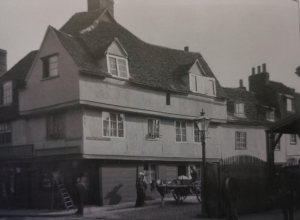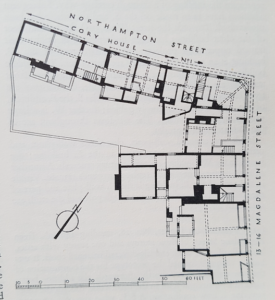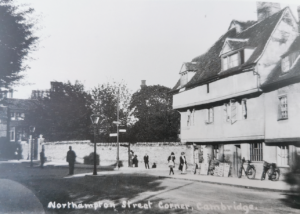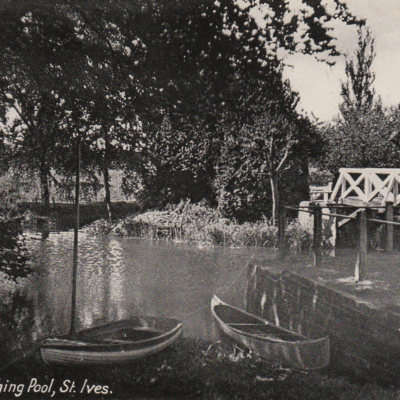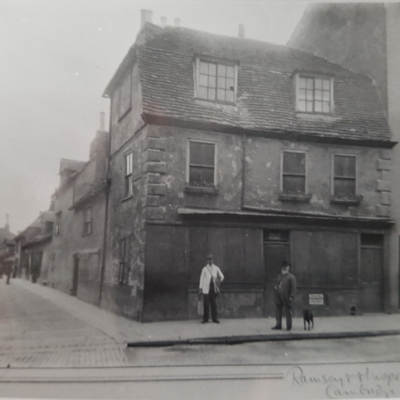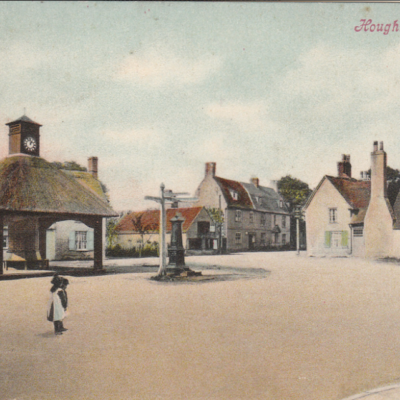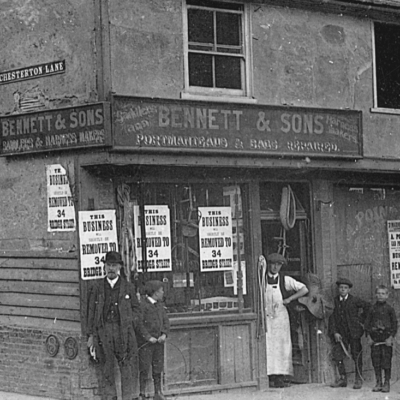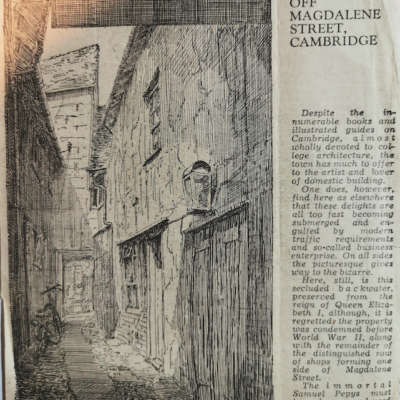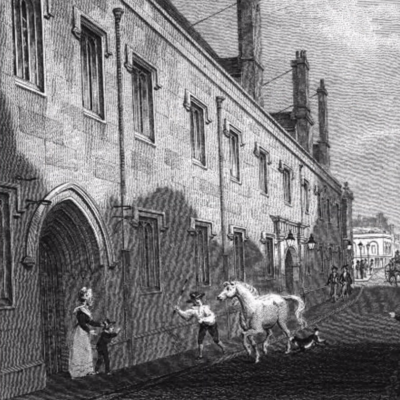Search by topic
- archaeology
- Building of Local Interest
- chapel
- charity
- church
- crime
- dressmaker
- fire
- Great Eastern Railway
- Listed building
- Mapping Relief
- medieval
- oral history
- poverty
- Public House
- Religious House
- Roman
- scholar
- school
- Then and Now
- tudor
- women
- work
- world war one
- world war two
Search by text
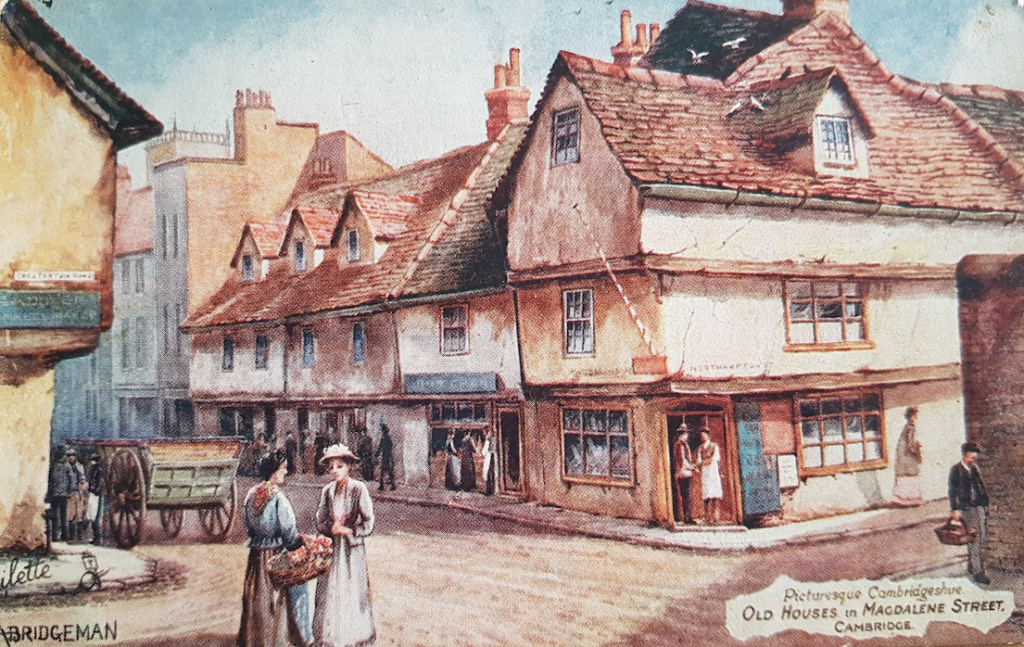 Corner of Magdalene and Northampton Streets
Corner of Magdalene and Northampton Streets13 Magdalene Street
History of 13 Magdalene Street
1959 Royal Commission on Historical Monuments Survey of Cambridge: Nos. 13, 14 and No.1 Northampton Street forming the corner block, of two storeys with cellars and attics, has timber-framed walls and tiled roofs. It consists of two 16th cent. ranges nearly at right angles to one another, all of one build, though now divided, and later than the adjoining range. In the 17th cent. the attics were reconstructed.
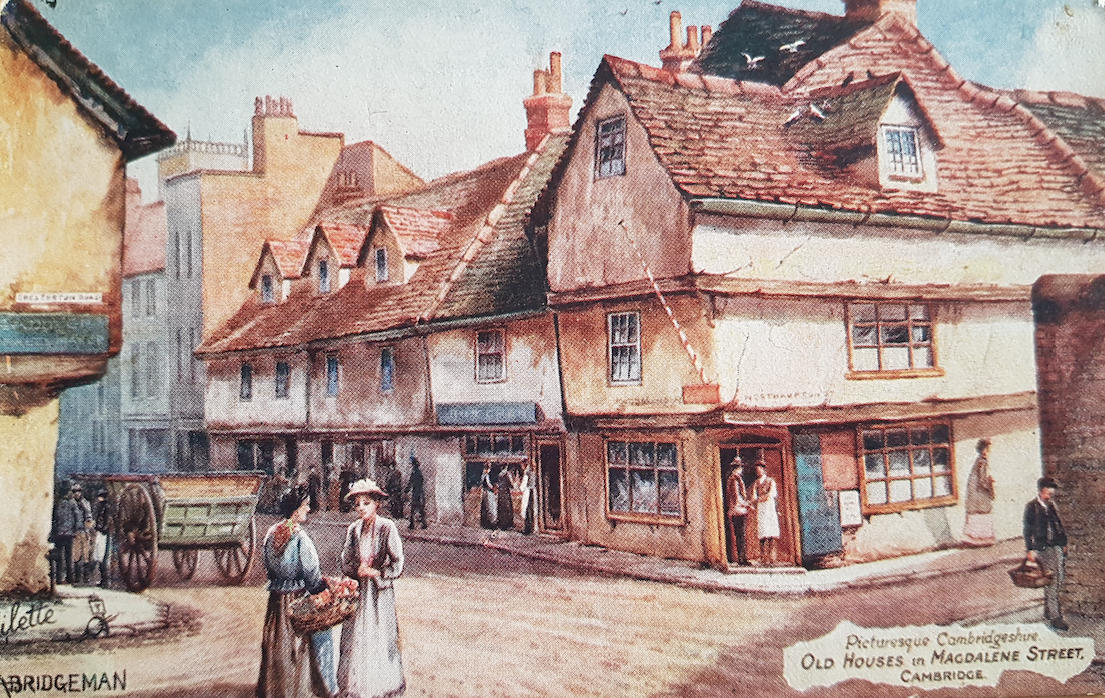
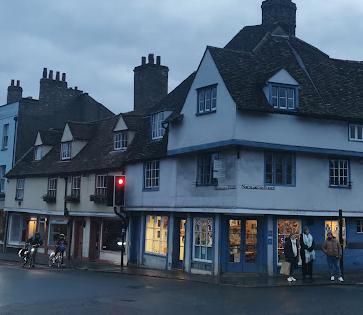
1908
Northampton Street was widened with the removal of William Collins’s timber and coal merchants yard.
1913
James Clark, newsagent & tobacconist
21/5/1952 Just before six o’clock this morning Mr Frank Webster was in bed in a room above his shop in Magdalene Street. Cambridge when he heard a terrific bang. A six-tonner lorry loaded with 15 tons of wheat had crashed into the shop at the corner of Northampton Street, ploughed through the wall and ended up with its front wheels where the counter used to be. It had swerved to avoid another lorry which also crashed into the shop. Between them the vehicles made the place look as if it had received a direct hit from a bomb (Cam.News)
1962
D J Clark, newsagent
Contribute
Do you have any information about the people or places in this article? If so, then please let us know using the Contact page or by emailing capturingcambridge@
License
This work is licensed under CC BY-NC-SA 4.0





